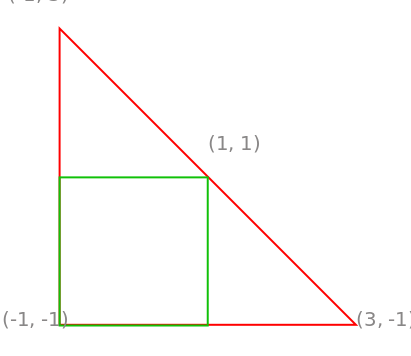Quad with Bufferless rendering
如果没记错的话,最初应该是在OpenGL SuperBibile里面看到的无Buffer的渲染方式,把三角形顶点数据写在vertex shader代码里,在shader里通过index取相应的数据,当时感觉平平无奇。后来在SaschaWillems的Vulkan
example里看到更精简的写法,当时表示惊呆了,使用gl_VertexIndex来构造顶点数据,画一个覆盖屏幕的quad。下面就是Vulkan example的实现。其中vkCmdDrawIndexed对应gl_VertexIndex,
vkCmdDraw对应gl_VertexID;我是在GL环境下,则是glDrawElements对应gl_VertexIndex,
glDrawArrays对应gl_VertexID。
1 |
|
就是构造这么一个三角形: 
with or without VAO?
具体实现的时候,遇到了这个问题,在GL4.6 core
profile下,没有vao无法将结果渲染到屏幕上,有趣的是,使用renderdoc截帧的时候,却能够截取到渲染的结果。具体的细节不知道,但是总结使用,在core profile下,必须要有vao绑定;在compatibility profile下,不需要vao直接glDraw即可。
搜索了一下,正好法线Bufferless rendering in OpenGL涉及了这个问题,摘抄一下。
A non-zero Vertex Array Object must be bound (though no arrays have to be enabled, so it can be a freshly-created vertex array object).Vertex_Rendering
The compatibility OpenGL profile makes VAO object 0 a default object. The core OpenGL profile makes VAO object 0 not an object at all. So if VAO 0 is bound in the core profile, you should not call any function that modifies VAO state. This includes binding the GL_ELEMENT_ARRAY_BUFFER with glBindBuffer.Vertex_Specification
所以,使用GL的core profile做bufferless rendering时,使用一个空的(dummy)vao绑定一下,才能让glDraw*命令生效。